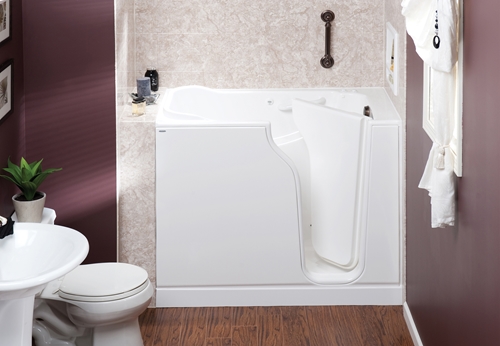Home Improvement Tips for Seniors Wellness

A home is often a person’s greatest asset, and for seniors, protecting it, as well as themselves, is of high importance. Home Improvement Tips for Seniors can give insight and ideas on how to solidify your investment and future plans. Check out some of these
Home Improvement Tips for Seniors and Where to Start
According to the U.S. Center for Disease Control:
-
- 1 in 3 Americans age 65 and over fall each year
- Falls result in more than 3 million injuries treated in emergency departments annually, including over 800,000 hospitalizations. (Source: National Council on Aging)
- Many seniors who do fall (less than half report their injuries) are more prone to reduced mobility and develop a fear of falling again
Many of those falls occur in the home. As a consequence, it’s important for seniors to consider a variety of home improvement projects they can pursue to better protect against the possibility of any fall. Improving your home for senior wellness purposes doesn’t necessarily require large, intensive remodelings, and there are even programs that offer financial assistance in completing the project if you need it.
Common causes of falls
There are many common elements of a home that may have never seemed particularly dangerous before, but pose different dangers in retirement age. The National Institutes of Health note these living environment aspects, among others, can lead to falls:
- Loose rugs
- Not having stair railings
- Not having grab bars in the bathroom
- Clutter on the floor or stairs
- Long drapery or curtains
A lack of lighting—generally throughout the house, but especially on stairs—is also a hazard to senior wellness. But like the above problems, this one has an easy fix. LED lights are an emerging technology now commonly available in department stores and they provide many benefits. LEDs run cooler, brighter, on less energy, for a longer life and at a greater cost-effective rate than comparable bulbs like CFLs and incandescent (which are being phased out).
The Most Common Home Improvement Tips for Senior

It’s particularly important stairs are well-lit.
Home fixes and upgrades to make
The most common area to focus on in improving the home is the bathroom. Stepping in and out of the shower could be problematic, but can be aided by installing grab rails. Those rails should be placed at either a horizontal or slightly upward sloping angle to facilitate strong grip. Also, any outdated toilet that sits too low could be replaced with a higher-sitting model. Sinks may also need to be made accessible for those in wheelchairs.
Realtor.com suggested some other common sense home tweaks to make:
- Clipping electrical wires and cords against the wall or floorboard to eliminate tripping hazards
- Securing rugs to the ground with grip tape on their bottoms or buying new rugs with gripping undersides
- Ensuring doors open and close easily, and replacing knobs with levers
“It’s important seniors consider a variety of home improvement projects they can pursue to better protect against the possibility of any fall.”
Financial help for home improvements
If the home fix requires more than a home improvement store trip or the cost of hired labor, there are financial programs seniors can take advantage of. Living on a fixed income may constrain financing, but seniors can obtain a low income subsidy through various housing development programs. The Very Low-Income Housing Repair program through the U.S. Department of Agriculture can provide loans of up to $20,000 and grants to $7,500.
SFGate points out cities, localities and states may maintain their own assistance programs.
There are many reasons to consider senior wellness in pursuing any home improvements. With loan programs available and other more cost-effective options, seniors have a lot to work with if they undertake home improvement projects.
Need help untangling the complexities of Medicare? Trust us to offer empathetic, unbiased advice and guidance. Call today, we are here for you! 844-783-2340.
- How Medicare Advantage Plans Cover Seniors’ Vision, Hearing, and Dental Needs - October 29, 2024
- 2025 Medicare Part D Changes: How to Save on Prescriptions - October 25, 2024
- Everything You Need to Know About the 2025 Medicare Changes and How They Affect You - October 21, 2024

